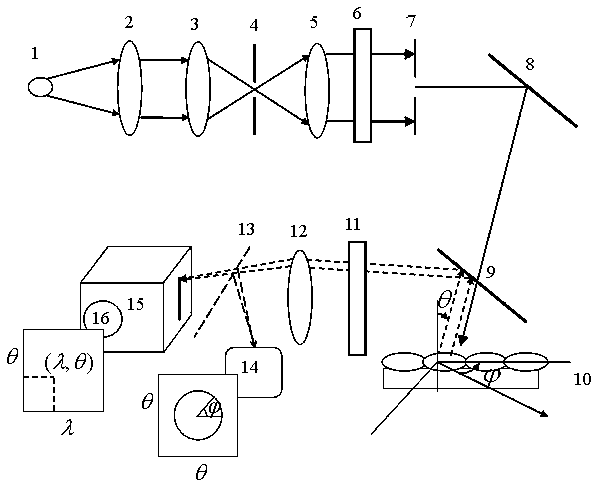Multi-mode low-coherence scattering spectrometer
A spectrometer and low-coherence technology, which is applied in the field of spectrometer and optical imaging, can solve the problems of insufficient reliability of detection results, lack of quantitative parameters, tissue microstructure, etc., to avoid changes in cell characteristics, convenient control, and simple optical path structure Effect
- Summary
- Abstract
- Description
- Claims
- Application Information
AI Technical Summary
Problems solved by technology
Method used
Image
Examples
Embodiment Construction
[0018] The present invention will be described in further detail below in conjunction with the accompanying drawings and specific embodiments.
[0019] Such as figure 1 As shown, a multi-mode low-coherence scattering spectrometer is provided with a white light source 1, the white light source 1 adopts a xenon lamp light source, and emits white light with high intensity and low coherence. The white light emitted by the white light source 1 is collimated through the collimation optical path, which is composed of the condenser lens 2, the first lens 3, the first diaphragm 4, the second lens 5 and the second diaphragm 7 in sequence, after collimation The divergence angle of the incident light is 0.3°~0.5°, 0.4° is the best, and the diameter is as low as 2mm.
[0020] A polarizing plate 6 is arranged between the second lens 5 and the second aperture 7, and the linearly polarized light after collimation and polarization is incident on the mirror 8, and the reflected light of the mi...
PUM
 Login to View More
Login to View More Abstract
Description
Claims
Application Information
 Login to View More
Login to View More - R&D Engineer
- R&D Manager
- IP Professional
- Industry Leading Data Capabilities
- Powerful AI technology
- Patent DNA Extraction
Browse by: Latest US Patents, China's latest patents, Technical Efficacy Thesaurus, Application Domain, Technology Topic, Popular Technical Reports.
© 2024 PatSnap. All rights reserved.Legal|Privacy policy|Modern Slavery Act Transparency Statement|Sitemap|About US| Contact US: help@patsnap.com








